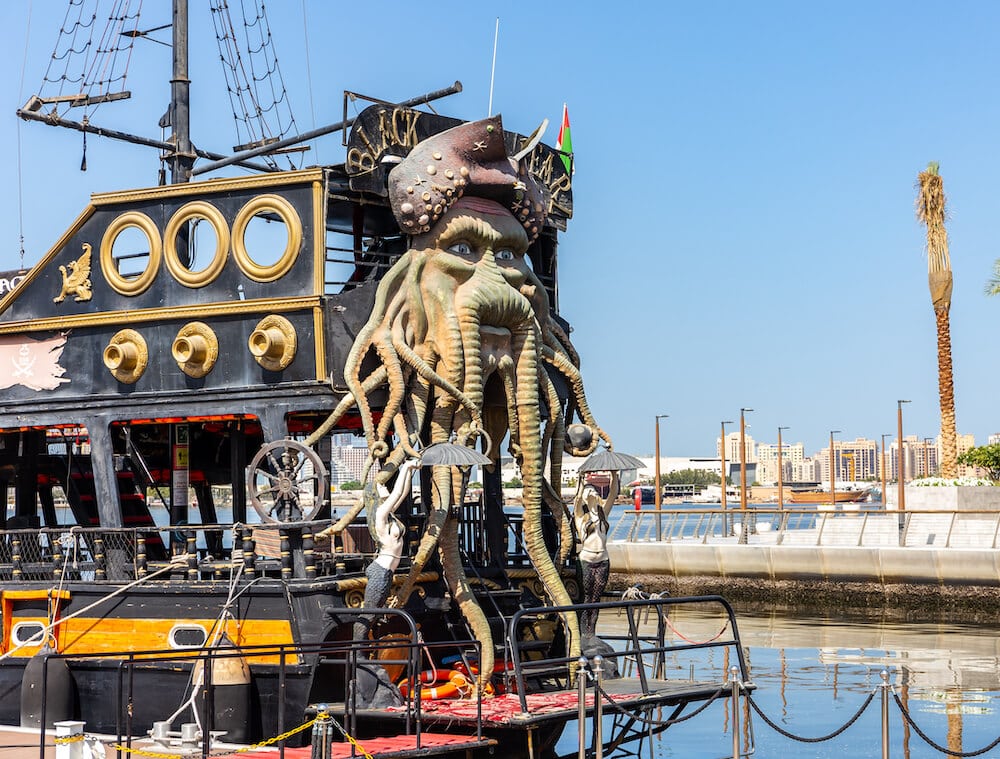

“Do you fear death?” often asked Davy Jones, the legendary captain of the ghost ship Flying Dutchman, in the movie Pirates of the Caribbean: At World’s End.
Davy Jones, the fictional character- an octopus-faced man with tentacles and saucer eyes with his heart kept in a chest as a forever memory of his love’s betrayal- is a cruel sailor with everlasting greed for violence.
For most of us, this octopus-faced Davy Jones comes to mind when somebody mentions ‘Davy Jones’ Locker.’ For the observant, of course, Davy Jones’ Locker is from where Jones raises the Black Pearl after making a pact with Jack Sparrow in the movie. Not just this movie, but there are many other movies, novels, and poems that have told us the story of Davy Jones Locker.
It is true saying that there’s always an element of truth in fiction and the stories around Davy Jones’ Locker do a better job of the fact. However, the real story behind the phrase is quite different from its fictionalized version; some legend details seem to be true.
According to the mythology of sailors, the phrase “Davy Jones’s Locker” is an idiom that refers to the seabed, the resting place of thousands of sailors who drowned at sea.
Sailors use the phrase to denote the afterlife of seafarers or even objects, including ships destined to rest at the ocean’s bottom.
Nevertheless, in its euphemistic sense, the phrase has been part of the English language for a long period, and the origin of the word remains disputed.


The first reference to Davy Jones’s Locker dates back to the 18th century. It was popularised as a nautical superstition among sailors and pirates.
In the earlier times, the name-Davy Jones- was referred to as the sailors’ devil and, sometimes, the evil god of the seas. However, unsuccessful in tracing the term’s origin, historians argue that its root went back centuries ago, and the stories were transferred to generations by word of mouth.
Though the origin of the phrase remains unclear, there have been several attempts to explain the truth behind it in the past.
The prominent among these tales, those that appeared in movies and writings, is the story of Jones as the captain of the mysterious ghost ship ‘Flying Dutchman.” He was also responsible for ferrying the souls to the other world and could set foot on land after a decade and reunite with Calypso, the sea goddess. However, when he came back, she was not there.
The Flying Dutchman, a mainstay of maritime lore, is a legendary ghost ship doomed to sail the oceans forever since it can’t make port due to the rough waters.
In one of the other stories, Davy Jones refers to David Jones, a pirate captain who sailed his ship across the Indian Ocean in the 1630s.
But many historians reject its possibility by arguing that the person mentioned in this story was not popular enough to become a legend, as is Davy Jones.
Davy Jones, a publican who had run a British pub, tells another story. This avatar of Davy Jones used to make his customers drunk and imprison them in his ale locker only to sell them off to passing ships as enslaved people.
The British pub owner later became a pirate after he went bankrupt. Stealing a ship, he went on to sail across the Atlantic Ocean and capture other ships and their crew abroad. While he decapitated most crew members, the remaining were locked before the vessel sank.
For some, Davy Jones represents an infamously myopic sailor named Duffer Jones, who often fell into the sea from his ship. Another such interpretation points to the 19th-century dictionary that refers to the name as a “ghost of Jonah,” the biblical seaman whose name meant lousy luck to sailors.
According to the Bible, God punished Jonah for his disobedience, and he became the “devil of the seas,” after which the crew aboard his vessel killed him.
Another version of the Jonah story refers to the prophet who happened to spend a few days inside the whale and connects his days in the tract of a whale with the Davy Jones’ Locker.
Among the Welsh seafaring community, Davy Jones refers to their patron saint – Saint David, whom they believe saves them from the ocean’s harsh nature. According to this legend, St. David will only protect the good sailors, while the immoral seafarers would be sent to Davy Jones’ Locker.
Some theories also suggest that “Davy Jones” comes from the name of Duppy, the West Indian malevolent ghost. According to the lore that did rounds among the people in the islands, Duppy comes out at night to haunt people.
Nonetheless, these stories are not supported by any credible evidence. These remain just stories. Thus, for some sailors, Davy Jones is no one but another name for Satan.


It is said that many sailors, during those years when the lore of Davy Jones was very popular, refused to discuss the stories in great detail amongst themselves. But at the same time, the tradition of paying homage to Davy Jones was in practice, especially during the celebrations of the Equatorial line crossing.
Meanwhile, long before the movie Pirates of the Caribbean, the story of Davy Jones and his locker found its place in several books, particularly works that talks about pirates.
Daniel Defoe’s Four Years Voyages of Capt. George Roberts, published in 1726, is believed to be the first known work that mentions the name of Davy Jones in a negative sense.
Similarly, The Adventures of Peregrine Pickle by Tobias Smollett, published in 1751, also talks about Davy Jones, referring to an evil spirit that comes in various shapes on the eve of hurricanes ship-wrecks, and disasters. However, Davy Jones’ locker reference was first found in an 1803 Naval Chronicle.
During the 19th century, Davy Jones and his locker appeared in some naval and adventure fiction. Washington Irving’s Adventures of the Black Fisherman, published in 1824, and Edgar Allan Poe’s 1835 novel King Pest are prominent examples of such works.
Herman Melville’s classic novel Moby-Dick, published in 1851, Charles Dickens’s Bleak House (1852-1853), and Robert Louis Stevenson’s work published in 1883, Treasure Island, are other 19th-century works that mention Davy Jones.
Even in the following centuries, despite the truth behind Davy Jones and his locker being disputed, various literary works have depicted similar characters and made several mentions of the legend.
Davy Jones was a British Pub owner who made his clients drunk, imprisoned them, and sold them to ship owners into slavery. After his pub closed due to bankruptcy, he became a pirate.
Davy Jones was a Scottish pirate whose mortal life is mysterious and less known. According to myths, he was a courageous sailor who fell in love with the harsh and untamable sea goddess, Calypso.
Davy Jones’ ship was named the Flying Dutchman. It is a ghost ship destined to sail the water to eternity without ever reaching land.
After Calypso’s betrayal, Davy Jones carved his heart and locked it in the Dead Man’s Chest. He abandoned his duty and turned into an ugly monster with an octopus-like face, tentacle beard, and crab legs and hands.
As he abandoned his duties, Davy Jones was cursed to be consumed by aquatic flora and fauna. He and his crew grew monstrous features like tentacles.
Davy Jones’ locker is used as a metaphor to indicate the final resting place of drowned ships and sailors, which remain in the deep ocean depths.
Disclaimer: The views mentioned above are of the author only. Data and charts, if used in the article, have been sourced from available information and have not been authenticated by any statutory authority. The author and The Marine Learners do not claim it to be accurate nor accept any responsibility for the same. The views constitute only the opinions and do not constitute any guidelines or recommendation on any course of action to be followed by the reader.
The article or images cannot be reproduced, copied, shared, or used in any form without the permission of the author and The Marine Learners.










We believe that knowledge is power, and we’re committed to empowering our readers with the information and resources they need to succeed in the merchant navy industry.
Whether you’re looking for advice on career planning, news and analysis, or just want to connect with other aspiring merchant navy applicants, The Marine Learners is the place to be.